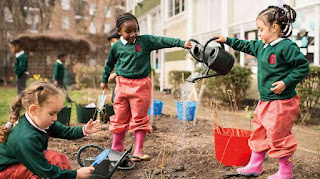In today's sedentary world, physical activity is more important than ever, especially for our younger generation. However, with limited time and resources, finding ways to incorporate physical activity into a classroom setting can be challenging. But fear not! With a little creativity and some simple strategies, any classroom can become a place for physical activity. In this blog post, we will explore various ideas and techniques to make your classroom an active and engaging space.
1. Movement Breaks:
One of the easiest ways to incorporate physical activity is by including regular movement breaks throughout the day. These short bursts of activity can help students refocus their attention and increase their energy levels. Simple exercises like jumping jacks, stretches, or even a quick dance party can get their blood flowing and minds recharged.
2. Active Learning Stations:
Transform your classroom into an active learning environment by setting up different stations that require movement. Create stations where students can rotate and engage in physical activities related to the lesson. For example, if you're teaching about animals, set up a station where students can mimic animal movements or create obstacle courses that reinforce concepts from other subjects.
3. Standing Desks or Flexible Seating:
Consider incorporating standing desks or flexible seating options into your classroom setup. Standing desks allow students to move freely while still engaging with their work. Flexible seating, such as exercise balls or cushions, can also promote active sitting, helping students improve their posture and core strength while they learn.
4. Brain Breaks:
To keep students engaged and energized, incorporate brain breaks that combine physical activity with cognitive challenges. These breaks can include activities like Simon Says or yoga poses that require focus and coordination. Brain breaks not only provide opportunities for physical activity but also enhance mental agility and concentration.
5. Active Technology Integration:
With advancements in technology, there are various options to integrate physical activity into classroom tasks. Utilize interactive whiteboards or projectors for movement-based learning games. Online platforms with educational exercises that require physical movement, such as dancing or virtual sports, can also be incorporated into lessons.
6. Outdoor Learning:
Take your classroom outside whenever possible. Nature provides a stimulating environment for physical activity and hands-on learning. Conduct science experiments, creative writing sessions, or even math activities outdoors. Encourage students to explore and engage with their surroundings, fostering a sense of curiosity and physical movement.
7. Collaborative Group Activities:
Incorporate group activities that encourage teamwork and physical movement. Assign projects that require students to work together while engaging in physical activities like building structures or creating presentations that involve role-playing. This not only promotes physical activity but also enhances social skills and cooperation.
Conclusion:
Creating a physically active classroom environment doesn't require a gym or extravagant equipment. By incorporating movement breaks, active learning stations, flexible seating, brain breaks, active technology integration, outdoor learning, and collaborative group activities, any classroom can become a place for physical activity. These strategies not only promote physical health but also enhance learning outcomes, engagement, and overall well-being. So, let's make our classrooms a space where minds and bodies thrive.





.jpg)





.jpg)
.jpg)


0 Comments